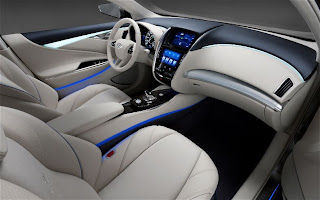The
Lamborghini Aventador LP700-4 is a stunningly fierce machine. It packs a
screaming 12-cylinder engine and is wrapped in distinct styling that
oozes testosterone. But that hasn't stopped the designers in Sant'Agata
Bolognese from creating an even more dramatic vision of their newest
supercar, called the Aventador J concept. The world will get its first
look at the supercar at the 2012 Geneva Motor Show.
To
create the striking Aventador J, Lamborghini removed the roof and
windshield from an Aventador coupe. Not surprisingly, its styling
closely resembles the Aventador , though the J's highest points are the
roll hoops behind each seat, and the rearview mirror that sits atop a
pole protruding from the dashboard. The doors still open upward, but
have only a tiny sliver of glass instead of the Aventador's power
windows. Out back, the Aventador J features a race-inspired carbon-fiber
wing supported by two curved mounts.
Lamborghini
has shown a car in this vein before -- the Concept S appeared at the
2005 Geneva Motor Show. Based on the Gallardo coupe, the Concept S also
was a speedster design; it essentially teased the production Lamborghini
Gallardo Spyder that made its debut in 2006. The Aventador J takes the
same basic stripped-out approach as the S, and looks more like a formula
racer than a series production car.








